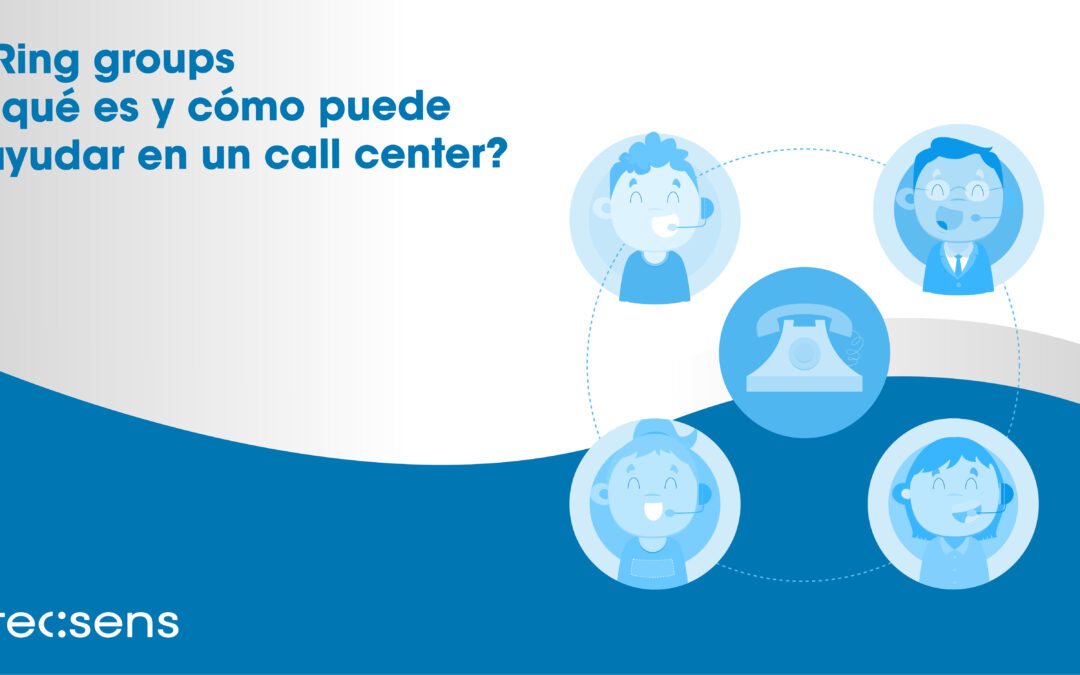Have you ever wondered if it would be possible for your company to define certain groups to which to divert incoming calls in a specific way? If so, we present the Ring Groups, what is it and how can it help in a call center?
What is a ring group and what is it for?
A ring group or ring groups is a feature that allows you to make multiple phones ring when an extension or number is dialed. It’s a great way for a company to share the distribution of incoming calls among employees. It is often used to effectively distribute calls to specific departments such as Sales, Customer Service , and Accounting.
Call groups allow employees to be more productive and help decrease customer wait time . In case none of the users assigned to a ring group are available, there are several forwarding options, such as directing calls to the group’s voicemail or transferring the calls to other extensions.
Benefits of using ring groups in a call center
- Drive employee efficiency and productivity
- Transfer calls to the appropriate department
- Reduce customer wait time
- Increase in First Call Resolution
- Distribute calls according to your needs
1. Drive employee efficiency and productivity
Small businesses and startups often lack the resources needed to set up and manage inbound call centers. Therefore, it is essential to implement ring groups to facilitate the process and that all extensions sound simultaneously every time a client contacts the company.
In this way, all employees can take the call and interact with the customer proactively, while better distributing the workforce. In addition, these systems allow you to configure call patterns in a specific way, redirecting each notification in the way that best suits the needs, dimensions and characteristics of each call center.
2. Transfer calls to the appropriate department
On the other hand, large companies need to streamline business processes, and implement tools that improve the customer experience by transferring calls in an agile way to the appropriate departments. In this sense, ring groups work as a strategy to transfer calls to the corresponding department (sales, shipping, technical support …).
3. Reduce customer wait time
Call groups significantly reduce the wait time for the person contacting the call center, thus improving the overall customer experience and speeding up the resolution process. Shorter wait times optimize your agents, make your customers happy, and reduce technology and operating costs in your call center, all at the same time.
4. Increase in First Call Resolution
Since ring groups facilitate communication between client and agent, they also favor the resolution of the problem in the first instance, that is, the First Call Resolution.
Every time a user contacts the customer service team again, although with appropriate software they do not need to repeat all their information, having to communicate again increases their frustration, anger or doubt. This situation has a direct impact on the image of the company and causes an increase in the dissatisfaction of the experience.
In addition, maintaining a reduced number of repeat calls guarantees a greater availability of agents to take new calls and engage for a longer time in potential customers, undoubtedly improving the experience and final satisfaction.
5. Distribute calls according to the needs of your call center
Like popular call routing strategies, call groups optimize the workforce by evenly distributing the workload, avoiding burn-out and employee frustration.
Since call centers have a particularly high turnover rate (between 30 and 45%), any improvement that enhances the convenience of agents will also benefit the company’s bottom line, reducing costs and time in attracting new employees.
In addition, efficient call distribution not only benefits team members, it also ensures a better impression of the company towards consumers and competitors.




